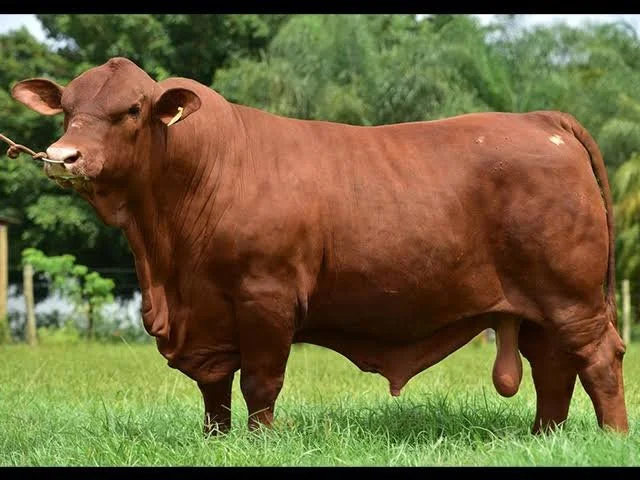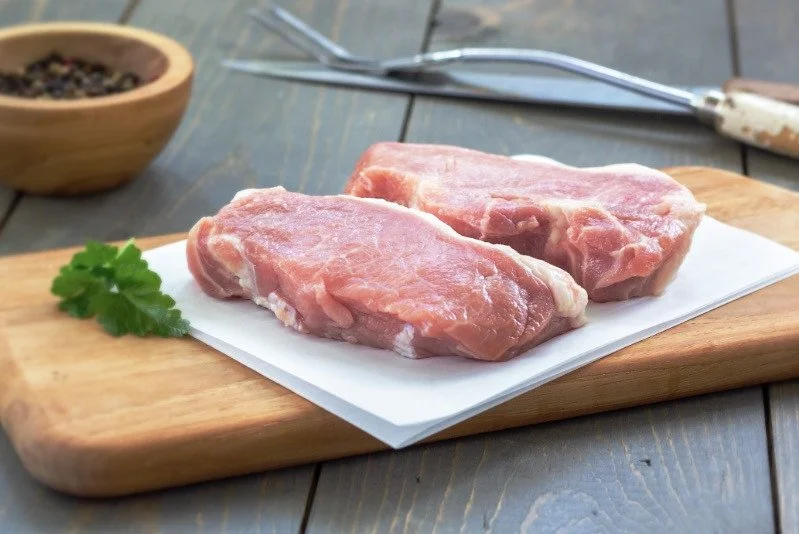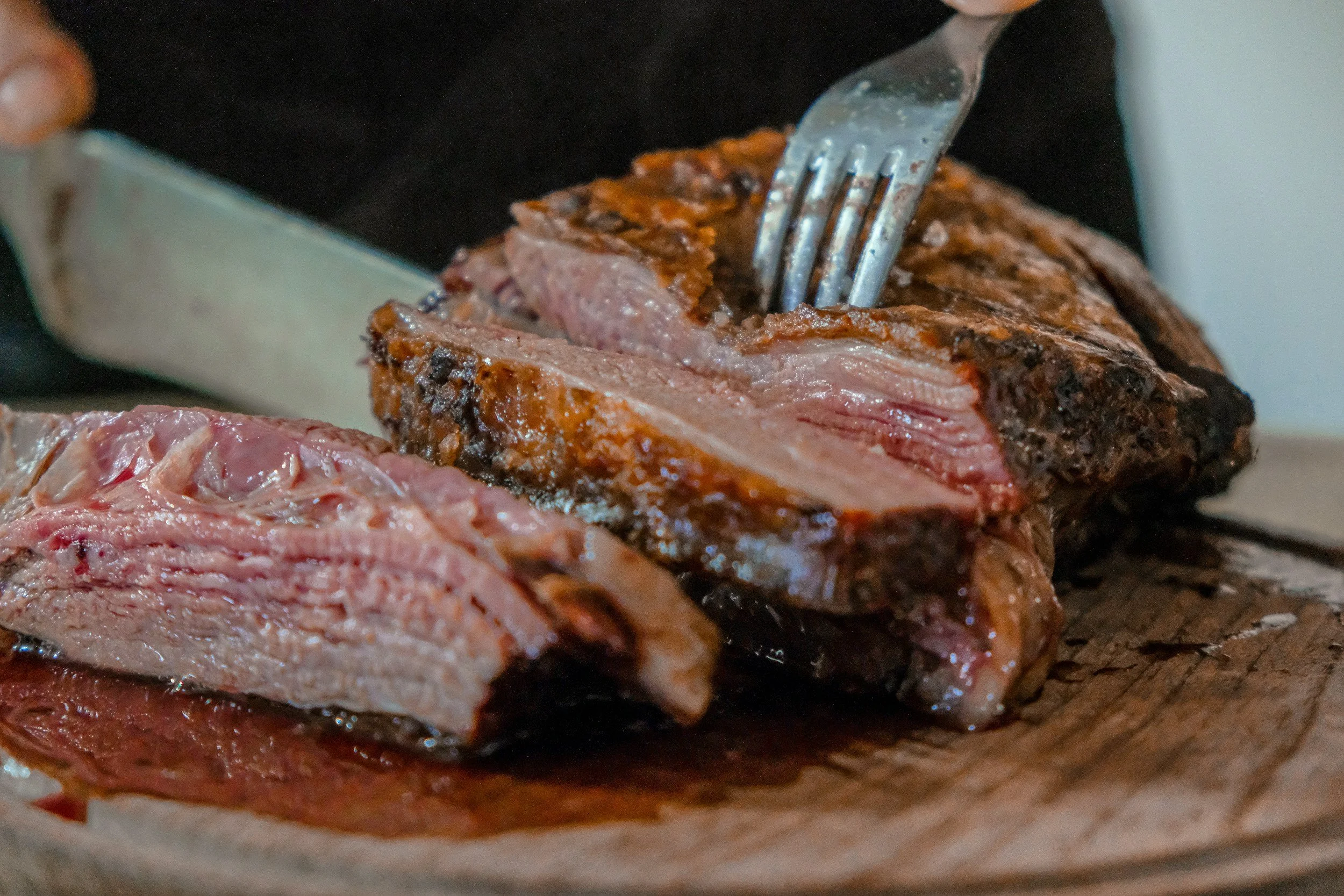Heat Genetics in Beef Cattle: Why They Matter in the South
Discover how heat genetics in beef cattle, like the resilient Senepol breed, help Southern farms extend grazing seasons, improve herd health, and produce sustainable, high-quality beef in hot climates.
Senepol bull- These cows are known for their ability to live in hot humid environments. We want to continue to raise animals that thrive in the hot south which is why we will be shifting our genetics towards heat tolerance.
As farmers and ranchers across the South strive for sustainable and efficient cattle production, one topic that continues to gain traction is heat genetics. With rising temperatures and the region's hot, humid climate, selecting cattle with superior heat tolerance is no longer optional—it's essential. One breed leading the way in this area is the Senepol, renowned for its adaptability to heat-stressed environments.
What Are Heat Genetics?
Heat genetics refer to the traits and adaptations in cattle that allow them to thrive in high-temperature conditions. These include:
Thermoregulation: Efficient cooling mechanisms like shorter, lighter coats and increased skin surface area.
Behavioral Adaptations: Grazing during cooler parts of the day and seeking shade effectively.
Feed Efficiency: The ability to maintain body condition and growth despite heat stress.
Senepol cattle, originally from the Caribbean island of St. Croix, are a standout in this category. Bred for decades to endure tropical climates, they bring heat-tolerant traits that can revolutionize beef production in the South.
Why Heat Genetics Matter in the South
Keeping cattle on grass longer is a cornerstone of sustainable beef farming, reducing the need for costly grain feeding while promoting healthier meat and soil regeneration. However, the South’s hot climate presents challenges that can limit grazing efficiency and herd health.
Here’s why heat genetics are crucial:
1. Extended Grazing Seasons
Heat-tolerant cattle, like Senepol, continue grazing during the summer months when other breeds may reduce activity. This allows producers to maximize forage use and keep feed costs low.
2. Improved Reproductive Performance
Heat stress often impacts fertility, leading to lower conception rates and longer calving intervals. Senepol cattle, with their heat-adapted genetics, maintain reproductive efficiency even in extreme temperatures.
3. Better Meat Quality
Heat stress can affect marbling and tenderness, as animals under stress often metabolize energy differently. Cattle with heat genetics stay healthier, leading to consistently high-quality beef.
4. Reduced Environmental Impact
By thriving on grass for more extended periods, heat-tolerant breeds reduce the reliance on supplemental grain, lowering the carbon footprint of beef production.
The Senepol Advantage
Senepol cattle are specifically bred for tropical climates, and their genetic traits make them an excellent choice for Southern farms:
Short, Slick Coat: Facilitates heat dissipation.
Adaptability: Performs well in diverse environments, from humid coastal regions to arid areas.
Docility: Easier to manage in high-stress conditions.
Grass Efficiency: Converts forage into weight gain effectively, even in challenging conditions.
Sustainable Farming and Heat Genetics
By incorporating heat-tolerant breeds like Senepol into their herds, Southern farmers can align with regenerative practices. These cattle not only thrive on grass for longer but also contribute to soil health by maintaining grazing pressure without over-reliance on feedlots.
Investing in the Future
As climate patterns shift, the need for heat-adapted cattle will continue to grow. By prioritizing heat genetics, farmers can ensure their herds remain productive, sustainable, and resilient—key factors for long-term success in Southern beef production.
What are your favorite southern breeds of cows? What types do you think does the best on grass?
Why We’re Excited About Red Wattle Pigs and What It Means for Our Pork Lovers
We’re excited to share some news about our pastured pork offerings! As many of you know, we’re passionate about raising healthy, happy animals while providing nutrient-dense, flavorful food for our community. In this post, we’ll break down our current pork offerings, an exciting switch we’re making with our pigs, and a quick guide to the cost of bringing premium pastured pork to your table.
Supporting Local Farmers: A Collaborative Effort
First off, we want to say thank you for supporting not only our farm but local farmers everywhere. We believe in a strong community of farmers and customers who value ethical, sustainable food practices. Whether you’re buying our pork or getting beef from another trusted source, we appreciate your efforts to keep small farms thriving. Together, we’re ensuring a steady supply of fresh, local food for our families and neighbors.
Popular Pork Cuts: What Our Customers Love
When it comes to pastured pork, we know what our customers enjoy most. The cuts in highest demand include:
Pork Butt (perfect for BBQ)
Ribs (for those fall-off-the-bone meals)
Loin (great for chops and tenderloin)
Sausage (always a crowd-pleaser)
We love these cuts too, and they’re consistently our best sellers. In addition to these popular options, we also offer some unique cuts, like the knuckle, which is perfect for making Schweinshaxe, a delicious traditional German dish that’s a personal favorite of mine.
Whole Hog Offerings: From Nose to Tail
At Eremos Farm, we believe in utilizing the whole animal. Just like when you buy beef, you can request every part of the pig to be packaged—from the organs to the feet, ears, head, and bones. Some of our customers use these parts for supplements (like liver), while we use the rest for our Central Asian shepherd dogs. Of course, bacon and sausage are available too, although there’s an additional processing fee for those items.
Introducing Red Wattle Pigs: More Meat, More Flavor
Now for the big news—we’re transitioning to Red Wattle pigs! Why the switch? Red Wattles are known for being excellent meat producers, which means more delicious pork cuts for you and more sausage options, something we’re really excited about.
Previously, we raised New Guinea hogs, which are considered “lard pigs.” While we love the benefits of lard, especially for its rich vitamin D content, we want to focus on providing you with more traditional pork cuts, and Red Wattles are perfect for that.
These pigs take about 5 months to grow to around 300 pounds, which translates to approximately 220 pounds of meat. This allows us to offer more variety and ensures we can meet the growing demand for our pork. We expect our next batch of Red Wattle pigs to be ready for processing in mid to late March or early April, and we can’t wait to share the results with you!
How Much Does It Cost?
We know price is an important factor when choosing your pork, so here’s a breakdown of what you can expect. For our largest pig (about 300 pounds), here’s how the cost breaks down:
Killing Fee: $95
Processing Fee (USDA cuts): $1.60 per pound (214 pounds hanging weight = $342.40)-
Sausage Processing: 74 pounds at $0.45 per pound = $33.30
Bacon: 21.39 pounds at $4.50 per pound = $96.26





